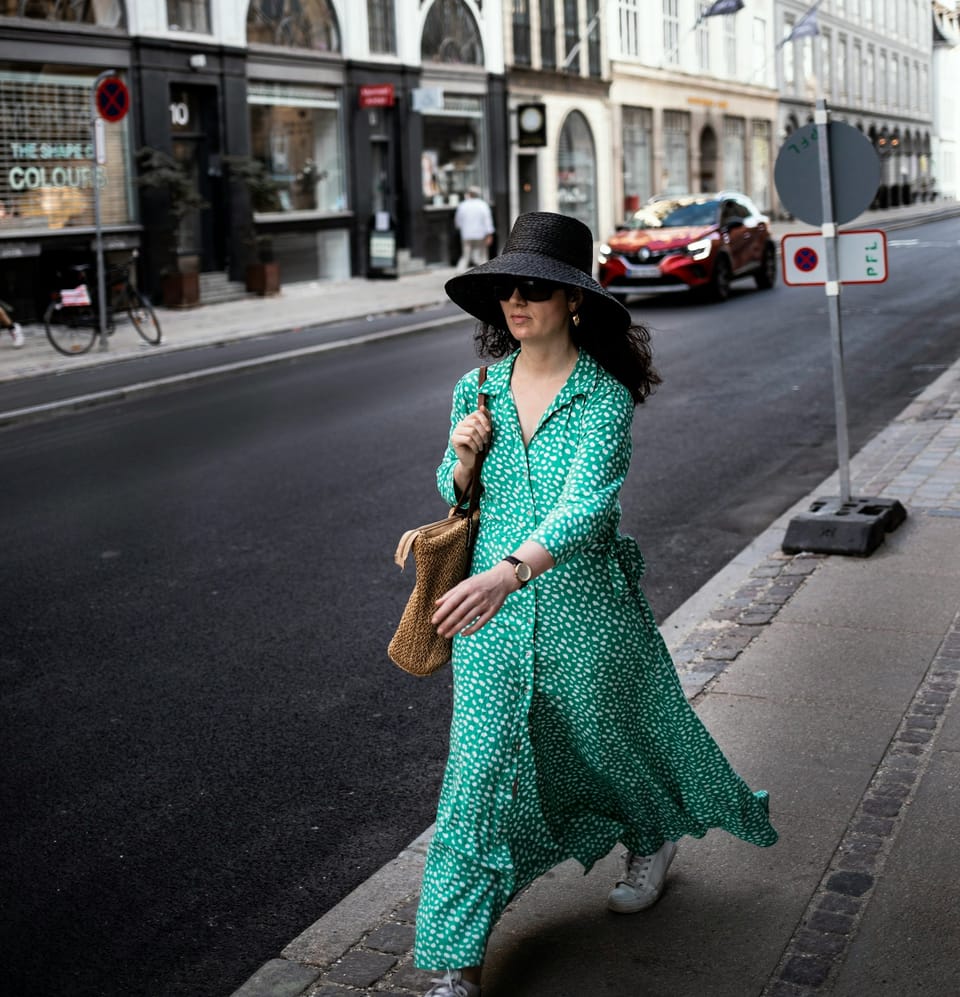The Look: Standing out or sinking in?

There’s a certain tribalism about how most people behave. Generally, we want to identify with groups. That’s one of the reasons why, for example, some teenagers will single out and laugh at someone who is considered weak or unusual; the act of laughing is a signal to others that they share their peers' feelings, which in turn feels good in the moment. Even if we're not bullies and we are well-intentioned, we all want to relate to a group. I guess that group, in my idealistic mind, has just shifted a little.
The baby-queer experience
When I first came out, I felt like the keys to the dressing-up box had been given to me, and I responded by making some, in retrospect, pretty weird sartorial choices. Every night out was a chance to dress like someone in an eighties Madonna movie; every dinner meant wildly overdressing for the kind of restaurant it was.
The sense of embarrassment I now feel about those choices - neon clubbing dresses, skirts too short to cover much of anything, heels I felt in pain walking in - is something I think almost every trans woman has to go through. It’s what I’ve heard described as the “baby queer” phase, when we pick what we want in the moment, not necessarily what will stand the test of time. Depending on what kind of statement we want to make, some of us stick with that style we originally picked, and others look around for more of a consensus.
It’s the balance between what you could call standing out and sinking in, with those two things not necessarily being mutually exclusive.
When I started, I was building my understanding of what suited my body, and I was still dealing with a lack of makeup and haircare skills, all of which led to a situation where I didn’t pass at all. Passing isn’t a prerequisite - in fact, some trans people don’t want it at all, feeling they would rather cultivate their own style and not worry about what other people think. This is absolutely fine, and is testament to how there is not one right way to transition that will work for everybody.
However, I realised about a year in that what I really wanted, more than anything else, was to identify as part of a group I admired: in this case, cis women. My clothing purchase choices became a lot less scattergun, and a lot more based around the following criteria:
Does it look like it would suit my shape?
In the early days, I bought a lot of tight things, because that was what I had seen and admired on others. I didn’t really think about how I didn’t have what would typically be called a natural feminine shape, and so would look unconventional in most environments. While, again, that’s perfect if that’s what you want, I craved passing, so eventually I went for looser, more flowy garments that would help accentuate my curves.
Is it the right size and length for me?
Because I didn’t understand women’s sizes, and to a certain extent didn’t care about them, I made some elementary mistakes with sizing in my first couple of years. Some of those mistakes are still hanging in my wardrobe. Things started to pick up when I looked out for ‘petite’ garments (made for people with shorter legs), as this meant things looked more proportional to me. It’s still frustrating now when I see something that would be perfect for me but either it’s not quite available in my usual size or the model is tall and the length would obviously swamp me. Saying that, it’s not great buying an above-the–knee skirt that goes below the knee, and alterations cost so much, so I try to make purchases that will fit me first time.
What that means at the moment
I’m still finding out what I’m going to look like - transition is, after all, all about changing shape, and there’s no guarantee that the things that look good now will still look just as good in a year or two, on a potentially different body shape.
What I am happy with, though, is the way I can now pass in some environments, in the right light. That’s down to putting more attention into styling, but it’s also down to paying attention not just to the women I’d ideally like to be like, but also the cis women who have to go to work, or go to the supermarket, and how they look: essentially, I try to follow the kinds of styles other people are wearing in their normal, mundane lives. Right now, I would rather fit in than stand out in most situations, though that might change, and probably will.
That doesn’t mean I can’t dress up to stand out at a party, but it does mean that, sometimes, I can feel what I think is a flash of feminine recognition from the woman serving me in the coffee shop, or standing next to me on the bus. Maybe she just wants to be friendly, but the point is, when we feel confident in ourselves (whether standing out or sinking in), we don't interpret every interaction negatively, and exchanges like that don't feel so hostile.
How has your style evolved? Let me know!
Email: thesaschalumi@gmail.com
Bluesky: @saschalumi

Member discussion